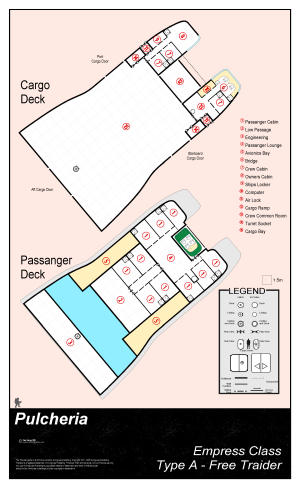Well, kind of. The 4T per person, or 2T per person at double occupancy, is not necessarily all staterooms. It covers life support, as well as passageways and common areas. I'm sure a small ding in per person space would net a decent PT area. Maybe not enough for the full crew at once, but something, to be sure. The real catch is life support is per person and never defined as to how much of that tonnage it takes.
I'm not sure if Striker contains rules for berthing for people in vehicles, MgT Book 6 does, and you can totally make berthing spaces much more like one would expect on a ship, in terms of space. You of course need galley and support facilities also, which adds yet more space, and life support, which has to cover all the space on the ship because Book 6 life support covers the volume of the vehicle indepenent of how many people it serves (minus the fuel spaces, of course, and possibly the armor spaces - and it makes sense that you also count out actual 2T/person spaces, as that already has life support supplied). You also need to allocate 100kg (or .1T) per person, which covers baggage and personal gear that would normally be allowed under Middle Passage, as the bunks in Book 6 presumably only give you a place to sleep. The life support is the long pole in this tent, because you need the highest grade for the air not to go stale a day or two into jump and negatively affect performance significantly. (If it wasn't significant, I would advocate for it under the amusing idea that Navy berthings smell like socks because life support is made by the lowest bidder). But this all falls apart because except with the smallest ships or with disproprtionately large crews, in normal-sized ships and crews, the per-person space is not significantly below 2T per person and it's massively more expensive.
Example: a 29-person berthing in an 800T SDB would be 58T and 14.5MCr using standard MgT1 rules. Using the strategy described above generates a 35T berthing, but it costs almost 69MCr. Most governments would cringe at essentially paying 54.5MCr for 23T of available tonnage, though some gamers would. It depends on what resources are available. I had toyed with the idea of military ships using this for enlisted berthing and normal staterooms for officer berthing, but it doesn't work out in most ship configurations.









